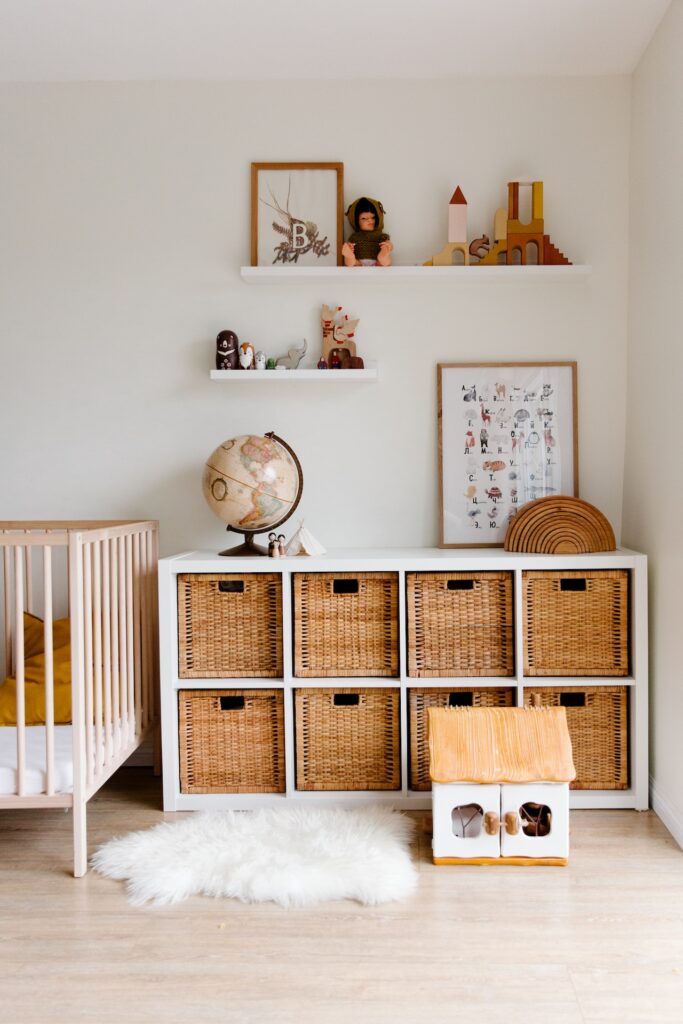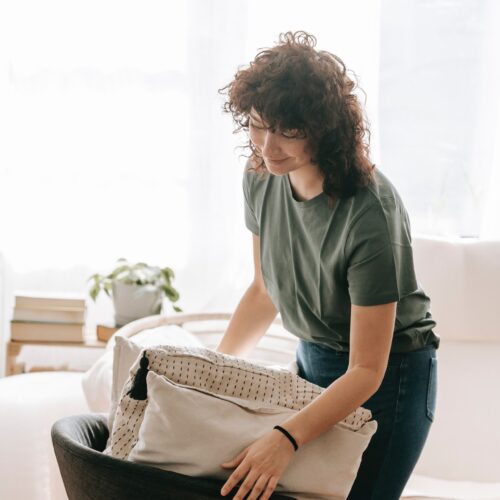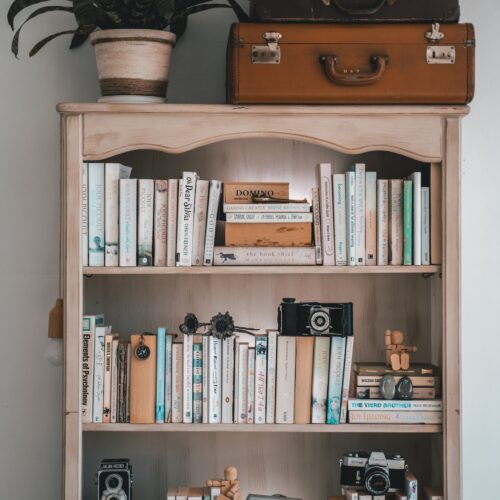
As a parent, you know that a clean and organized space is essential for your child’s development. But with crawling babies and toddlers into the mix, it can be hard to keep up with the demands of daily life, let alone find the time to declutter and organize your child’s bedroom.
I feel you. Very well. With all of life’s demands, it can be difficult to find the time to declutter and organize your child’s bedroom, just to see it become a disaster zone again within days, no, I mean, hours. It may seem like a never-ending cycle, but there are ways to manage the madness and create an organized haven for your little ones.
Here are some tips on how to organize your child’s bedroom:
Want to save this recipe? Enter your email below and we’ll send the recipe straight to your inbox!
NOTE: By saving this recipe, you agree to join our weekly recipes newsletter.
Do a Major Purge at Least Every Six Months
Kids grow fast, and their tastes change even faster. That little cute elephant stuffy they couldn’t live without last year is now collecting dust on a shelf. And those outgrown clothes taking up valuable space in the closet? They need to go, too.
It’s important to do a major purge of your child’s bedroom at least every six months (or more often if needed) to get rid of the old and make room for the new. This will not only help to keep the space tidy, but it will also prevent your child from becoming overwhelmed with too many toys and belongings.
Personally, my husband and I would love to do it every three months, exactly the time our kids would have a growth spurt and we could no longer find clothes that fit them well in their closets. But every six months is a more realistic goal, and it works just as well.
The key is to be ruthless when you purge. If your child hasn’t used or worn something in the past six months (or longer), chances are they won’t miss it. So donate, sell, or recycle anything that is no longer needed or loved.
Create a “Drop Zone” for Each Child
A “drop zone” is a designated space near the entryway of your home where each child can leave their shoes, backpack, and any other items they need to grab on their way out the door. This simple change can make a huge difference in the overall tidiness of your home, and it will teach your kids to be responsible for their own belongings.
If you don’t have a dedicated entryway, you can create a drop zone in each child’s bedroom or in a shared space such as the family room or mudroom. Just make sure each child has a designated spot where they can easily find their things when they need to leave the house. You know, a small basket will do the trick. Maybe they can help decorate them with some of their favorite stickers—to make sure their siblings don’t accidentally grab their stuff!
Invest in Storage Furniture that Grows with Your Child
When it comes to kids’ bedroom furniture, storage is key. Look for dressers, nightstands, and bookshelves that have plenty of drawers and shelves to keep your child’s belongings organized. And if possible, choose pieces that can be used for years to come.
Ikea has a great selection of storage furniture for kids’ bedrooms, and many of their pieces can be used as your child grows. For example, the IKEA Hemnes dresser can be used as a changing table when your child is a baby and then converted into a dresser when they’re older.
Another great option is the IKEA Kallax shelf unit. It can be used as a bookshelf or toy storage when your child is young, then repurposed as a clothing storage solution when they’re older.
For beds, look for ones with built-in drawers or trundles to maximize storage space. And if you’re short on floor space, consider hanging shelves on the walls to create additional storage and space on the floor. Because they do need space to play, after all!
Label Everything
Once you’ve purged your child’s bedroom and invested in some new storage furniture, it’s time to label everything. This will help keep your child’s bedroom organized. Use labels to identify where everything goes, such as “books” or “clothes.” And consider labeling the front of each drawer with what’s inside so your child knows exactly where to find what they’re looking for.
You can use store-bought labels, or you can get creative and make your own. For a more personalized touch, try using washi tape and a sharpie to label everything.
If your kids have their own rooms, make sure to label their furniture and storage bins with their names. This will help prevent arguments over who gets to use what and will make it easier for you to keep track of whose belongings are where.
If they all share a room, you can label each child’s side of the room with their name. You know how crazy it can be when one sibling starts using the other’s stuff without asking!
Teach Your Child to Clean Up Their Room
One of the best ways to keep your child’s bedroom organized is to teach them how to clean up their own space. This may take some time and patience on your part, but it’s worth it in the long run.
Start by showing your child how to put their belongings away in an organized manner. Then, let them practice doing it on their own. As they get better at it, you can start giving them specific tasks to do each day, such as making their bed or picking up their toys. You can also create a cleaning schedule that outlines what needs to be done and when. This can be posted on the wall or fridge so everyone is on the same page.
Finally, don’t forget to praise your child when they do a good job of keeping their bedroom clean. This will encourage them to continue doing so in the future. We usually encourage the kids to clean their stuff and rooms by giving them some sort of reward, like one extra ice cream scoop or half an hour of TV time.
Set Some Simple Rules
Now that you’ve taken the time to declutter and organize your child’s bedroom, it’s important to set some rules to help keep it that way. You know, kids will be kids. But a few simple rules can go a long way in keeping their bedroom clean and organized.
First, establish a no-clutter zone. This is an area of the room where your child is not allowed to put anything on the floor. This could be their bed, a certain area of the rug, or even just a specific corner of the room.
Then, create a rule that all toys must be put away before bedtime. This will help prevent your child’s bedroom from becoming a cluttered mess overnight. And lastly, set a rule that nothing new can come into the bedroom until something old is taken out. This will help you avoid having too much stuff in the room and will teach your child to be mindful of what they bring into their space.
Conclusion
Use this guide as a roadmap for success when decluttering and organizing your kid’s bedroom. After all, a tidy room can lead to a tidy mind! Just remember to be patient, label everything, and involve your child in the process as much as possible. Rome wasn’t built in a day, and neither is a well-organized bedroom. But with a little time and effort (and maybe one or two glasses of wine down the line), you can get there!



Leave a Reply